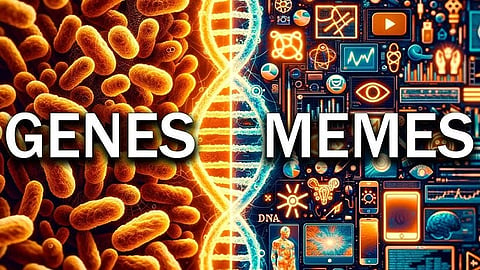
- Home
- Live Blog
- Breaking News
- Top Headlines
- Cities
- NE News
- Sentinel Media
- Sports
- Education
- Jobs

Prof. (Dr) Tazid Ali
(tazid@dibru.ac.in)
Do we have a ‘free will’ or are we all ‘programmed’ by some Supreme Being? The following is what science has to say in this regard. Every living organism possesses a set of DNAs that contain the complete blueprint for that organism to function and develop. A DNA is a macromolecule consisting of a long chain of four building-block molecules called nucleotides. Specific segments of DNA are called genes. Genes are the units of heredity, encoding the biological traits passed from one generation to the next. They are basically the same kind of molecule in all of us – from bacteria to elephants. Genes do two important things- one is they replicate and the other is that they code or control the formation of proteins. All genetically determined differences, like the shape of our noses, the degree of our intelligence, resistance/vulnerability to particular diseases etc., are the result of differences in the capacity to synthesize proteins. Thus, genes indirectly programme and influence the manufacture of bodies, and organisms are the survival machines of the genes.
Are we then all machines programmed by our genes? Do genes completely determine human attributes? Do not environmental factors influence our nature? Are we not also nurtured by the culture surrounding us? In fact, humans are uniquely dominated by culture. So parallel to genetic transmission, we have cultural transmission. This brings us to the debate of nature versus nurture.
Culture propagates through a new kind of replicators called memes – units of cultural transmission. The concept of ‘meme’ was introduced by evolutionary biologist Richard Dawkins in his 1976 book The Selfish Gene. Dawkins defined memes as cultural units—ideas, behaviours, or practices—that spread from person to person through imitation, teaching, or other forms of social learning. Examples of memes include language, scientific ideas, political ideologies, religious beliefs, superstitions, patriotism, and even fashion trends.
Cultural transmission is analogous to genetic transmission in that it can give rise to a form of evolution. While genetic evolution operates over long timescales, cultural evolution is fast. The human civilization is the product of memetic evolution. Just as genes propagate themselves in the gene pool by leaping from body to body via sperm or eggs, so do memes propagate themselves in the meme pool by leaping from brain to brain. Imitation, in the broad sense, is how memes can propagate. Just as not all genes that can replicate can do so successfully, similarly, some memes are more successful in the meme pool. For example, the God meme propagated very fast and wide because it has a great psychological appeal. The Christianity meme is more numerous than the meme of Judaism; one may investigate what cultural factors favoured the former over the latter. Selection favours memes that exploit their cultural environment to their advantage. Just as we have rival genes competing with each other, so also, we have competing memes, say for example, capitalism versus communism. For their propagation, memes compete for radio and television time, billboard space, newspaper column inches, library shelf, etc. Again, just we have co-adapted genes i.e., genes that favour each other’s propagation, so also, we find co-adapted memes. For example, the God meme and meme of Hell are co-adapted memes, reinforcing each other and assisting each other’s survival in the meme pool.
Genes are transmitted biologically from parents to offspring, requiring reproduction for inheritance. Memes, however, can spread horizontally within a generation, as well as vertically across generations, allowing for faster dissemination and adaptation. Both genes and memes undergo mutations that introduce variation. In genes, mutations occur at the molecular level, leading to changes in an organism’s traits. On the other hand, Memetic mutations involve alterations in the content or expression of ideas. For instance, the Judaism meme mutated into Christianity meme, and Islam evolved from Judaism and Christianity. Christianity meme later developed into two mutated versions: Catholic and Protestant.
The advent of the internet and social media has revolutionized memetic evolution. The speed and scale of digital meme propagation raise ethical and societal concerns. Just as there are reckless and ruthless genes like cancer genes that damage the host body, similarly there are memes propagating hate and intolerance that damage the social fabric and cohesion of mankind. Understanding memetic dynamics in the digital age is crucial for addressing these issues. Genes shape the biological aspects of human existence, while memes drive the cultural and intellectual dimensions. Together, they form a complex system that enables humans to adapt to changing environments, build societies, and create meaning. As we are built as gene machines and cultured as meme machines, the profound question is: how far can we override the diktat of genes and memes?